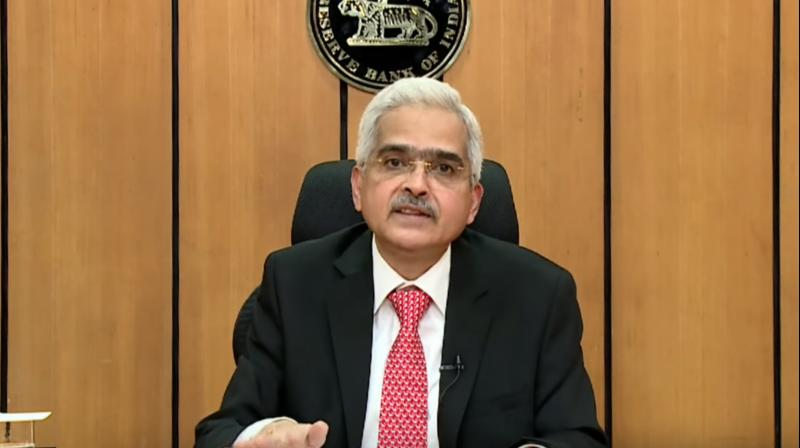
Amid Omicron threat, RBI keeps lending rates unchanged
Retains GDP growth estimate at 9.5% for FY22, but pares down Q3 FY22 projection to 6.6%; COVID variant may hit economy, says Governor Shaktikanta Das

With the emergence of the Omicron variant of COVID posing a challenge to the economy, particularly sectors such as travel and hospitality, the Reserve Bank of India’s (RBI) Monetary Policy Committee (MPC) has opted to retain the repo rate at 4%.
The MPC also said on Wednesday it is maintaining the reverse repo rate at 3.35% and the Marginal Standing Facility (MSF) rate at 4.25%. It further maintained its stance as ‘accommodative’, as five out of six MPC members voted in its favour. An ‘accommodative stance’ indicates the rate-setting panel is inclined to keep the rates unchanged or lower them.
Repo rate is the rate at which the RBI loans short-term funds to banks for onward lending. It has now left the rate unchanged for the ninth consecutive time.
Policy support for economic recovery
“Given the slack in the economy and the ongoing catching up of activity, especially of private consumption, which is still below its pre-pandemic levels, continued policy support is warranted for a durable and broad-based recovery,” said RBI Governor Shaktikanta Das at a news conference after the MPC meeting.
“The prospects of economic activity are steadily improving,” he said, but added that fresh disruptions triggered by Omicron could slow down the recovery.
Also read: How feasible is a bad bank for farm sector?
The rates were left unchanged to support the sustained recovery of the economy, said Das. The onset of Omicron infections has led to fears of curbs on travel and economic activity, which is just picking up. This has caused “considerable uncertainty on growth dynamics” for the next few months, said the RBI Governor.
While it is not clear yet how severe an Omicron infection can be, there is fear that it may trigger the dreaded third wave of COVID in India. The country is just picking up the pieces from the second wave, which was caused by the Delta variant earlier this year. Till date, India has reported around 25 Omicron cases.
GDP growth, inflation projections
The RBI said the nation’s GDP grew 8.4% in the quarter ended September 2021 (Q2 FY22), against a degrowth of 7.4% in Q2 FY21. The large difference is mostly due to base effect.
Retaining its GDP growth projection for entire FY22 at 9.5%, the central bank revised down its growth estimate for Q3 FY22 to 6.6%, against the 6.8% stated earlier.
Even as food prices are spiralling, the RBI said it foresees headline inflation peaking in Q4 FY22; after that, it may come down. The reduction in VAT on fuel, implemented by several States, will also bring down inflation, it added. “The RBI’s motto is to ensure a soft landing that is well timed,” said Das.
The Consumer Price Index (CPI) is estimated at 5.3% for FY22, said the RBI. For Q3 it would be 5.1% and for Q4, 5.7%. Per MPC, the ideal inflation rate is 4%.


